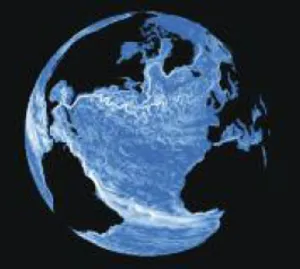
The spread of oil spills and marine pollution through the world’s oceans can now be simulated on computer models developed by the National Oceanography Centre to help the marine industry manage and measure risk.
These novel techniques will be demonstrated at Ocean Business, the hands-on ocean technology event hosted by the National Oceanography Centre (NOC) in Southampton 14–16 April 2015. There will be touch screen displays of the latest interactive computer simulations of global ocean circulation.
Dr Katya Popova, an ocean modeller at NOC is holding a workshop at Ocean Business. She will show how the latest advances in ocean circulation computer modelling are providing increased detail for environmental consultants – including how new sea routes could appear in the Arctic in the future.
She said, ‘Our research group has recently completed a high-resolution simulation of the global ocean and it is now available online. The workshop will explain how to use the data and will give examples from around the world. This is an exciting tool for anyone involved in managing risk in the marine environment.
‘The new computer simulations show ocean currents – their speed, direction and associated properties like temperature and salinity – around the world. These model results can be used in different scenarios – how an oil spill might spread across an ocean in days, weeks and months – and at different times in the year. Or how pollution could spread, and where, over years.’
The group is emphasizing its work on high-resolution ocean circulation in the Arctic Sea, showing how Arctic ice might retreat over the next hundred years given the projected rate of carbon emissions. The projections show how routes through the retreating sea-ice may be possible in the summer months if climate change continues in the same direction.
The group’s research findings will be available later in the year through research publications and delegates will get a preview of some of the data that will be made available.
Over 5,000 people are expected to attend Ocean Business, which will showcase the latest advances in ocean technology. The three-day event is the second largest of its kind in Europe with over 300 exhibitors taking part. There will be workshops, waterfront demonstrations and training events in addition to the exhibition.
The marine and maritime sectors contribute £35 billion to UK GDP. In the Solent region alone these sectors account for 5% of private sector jobs. In the high-tech marine industries this business is set to grow.